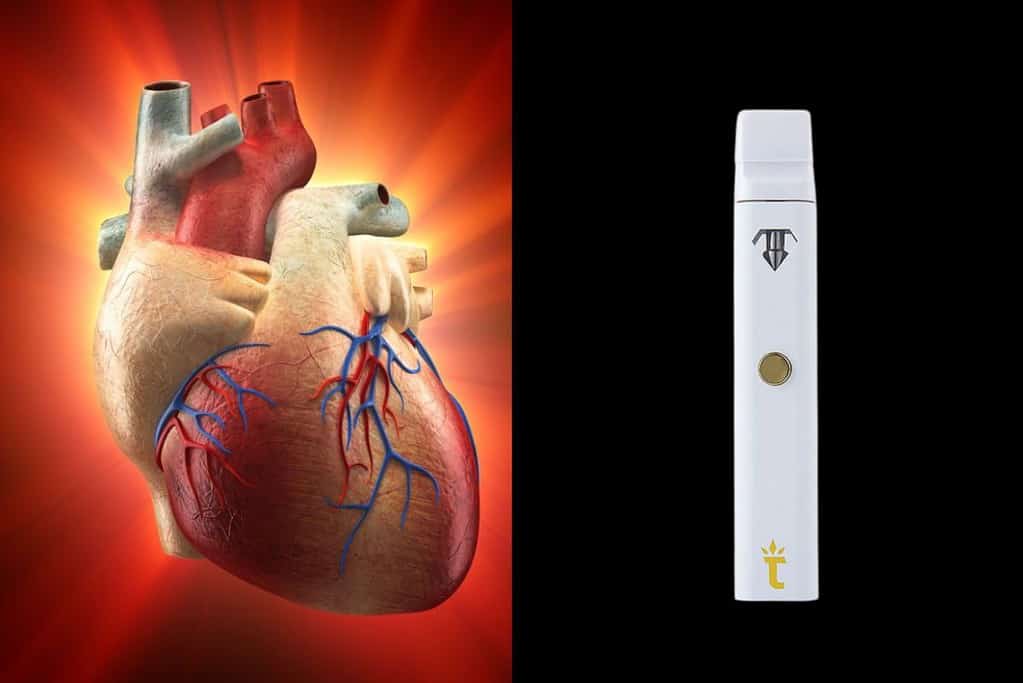Does Vaping Affect Muscle Growth: Unveiling the Truth
Vaping has become a popular alternative to traditional cigarette smoking, with many people believing it to be a safer option. However, as the use of electronic cigarettes continues to rise, so do the concerns about their potential health effects. One area of interest among fitness enthusiasts and researchers alike is the potential impact of vaping on muscle growth.
Studies investigating the relationship between vaping and muscle growth are still limited, but some findings suggest that it may have an effect on the body’s ability to build and maintain muscle. This can be attributed to certain substances found in e-cigarette aerosols, such as nicotine and other chemicals that may potentially interfere with the body’s ability to repair muscle tissue and promote muscle growth. It is important to note that the potential negative effects of vaping may vary depending on factors such as individual susceptibility, the level of exposure, and the specific components of the e-cigarette product being used.
While it is clear that more research needs to be conducted on the long-term consequences of vaping, especially in relation to muscle growth, it is crucial for individuals to stay informed and make educated decisions about their health. As with any lifestyle choice, it is beneficial to consider the potential risks and benefits, and consult with healthcare professionals before making any significant changes to one’s habits.
Table of Contents
Understanding Vaping

Vaping is the process of inhaling and exhaling aerosol or vapor produced by electronic cigarettes (e-cigarettes) or other vaping devices. E-cigarettes are battery-powered devices that heat a liquid known as e-liquid or vape juice, which typically contains nicotine, an addictive chemical found in tobacco products. However, nicotine-free e-liquids are also available for those who wish to avoid nicotine exposure.
E-cigarettes were initially designed as a less harmful alternative to traditional tobacco products, such as cigarettes. They have gained popularity among various demographics, including those who want to quit smoking cigarettes or have never smoked before. The liquid used in e-cigarettes comes in a wide range of flavors, which can make vaping more appealing to some users.
While vaping is considered to be less harmful than smoking cigarettes, it is not without risks. Studies have shown that e-cigarettes can still deliver harmful substances, such as formaldehyde, acetaldehyde, and acrolein, which are toxic to the body. Additionally, the long-term health effects of vaping remain a subject of ongoing research, and its safety has not been definitively established.
One area of interest in the research on vaping is its potential impact on muscle growth. Nicotine, being a known addictive chemical present in most e-liquids, can have physiological effects on the body, including influencing muscle-building processes. For example, nicotine has been shown to constrict blood vessels, which may reduce blood flow and oxygen supply to the muscles. This could potentially impair muscle function and growth.
However, the relationship between vaping and muscle growth is still not fully understood, and more research is needed to determine the precise effects of e-cigarettes on muscle development, especially compared to conventional tobacco products. In the meantime, it is important for individuals to be aware of the potential risks and benefits associated with vaping, and make informed choices regarding their use of electronic cigarettes and other tobacco products.
NEW CUSTOMER DISCOUNT
Save 15%
15% OFF YOUR ENTIRE ORDER FOR NEW CUSTOMERS USE CODE WELCOME15!

Nicotine: A Closer Look
Nicotine is a naturally occurring stimulant found in tobacco plants. It is the primary addictive chemical in tobacco products, and it is also present in various nicotine replacement therapy products and e-cigarettes. Nicotine consumption can have a variety of effects on the body, including the muscles.
When nicotine enters the body, it acts on the central nervous system by binding to nicotinic acetylcholine receptors. This leads to the release of neurotransmitters such as dopamine and norepinephrine, which can cause feelings of increased alertness, focus, and pleasure. Due to these stimulating effects, nicotine can have an influence on various aspects of muscle function, including contraction, metabolism, and recovery.
Research has shown that nicotine can affect muscle growth and function through several mechanisms. For example, nicotine can lead to a reduction in blood flow to the muscles, which may hinder the delivery of nutrients and oxygen necessary for muscle growth and repair. Additionally, nicotine can lead to the production of reactive oxygen species, which can cause oxidative stress and damage to muscle cells. These effects may contribute to muscle fatigue and a decrease in overall muscle performance.
Furthermore, nicotine has been found to impair the normal functioning of muscle cells by disrupting the balance of calcium within the cell. This disruption can lead to a decrease in muscle strength and contractility, which can ultimately impact athletic performance and muscle growth. It has also been suggested that long-term nicotine consumption can negatively affect satellite cells, which are essential for muscle repair and regeneration.
While nicotine is a powerful stimulant, its effects on muscle growth and function should not be overlooked. It is important for individuals who engage in regular physical activity to be aware of the potential impact of nicotine consumption on their muscle health. Overall, further research is needed to fully understand the relationship between nicotine and muscle growth, as well as the potential long-term consequences of nicotine consumption on skeletal muscle health.
Effects of Vaping on Oxygen Levels
| Effect | Description | Approximate Value/Range |
|---|---|---|
| Decreased Oxygen Levels | Reduction in blood oxygen saturation levels | Drop of about 1-2% |
| Impaired Lung Function | Reduction in FEV1 (Forced Expiratory Volume in one second) compared to non-vapers | Average reduction of about 1.3% |
| Increased Heart Rate | Increase in heart rate after vaping | Approximately 10-20 bpm |
| Inflammation and Irritation | Symptoms like coughing, shortness of breath, wheezing due to respiratory tract inflammation and irritation | Present |
| Carbon Monoxide Exposure | Low levels of exposure (compared to traditional cigarettes) | Present |
| Impact on Exercise Tolerance | Lower peak oxygen consumption during exercise compared to non-vapers | Present |
| Potential for Acute Effects | Symptoms like coughing, chest pain, shortness of breath, especially in individuals with pre-existing respiratory conditions | Present |
| Long-term Health Consequences | Effects on respiratory health over extended periods of vaping | Ongoing Research |
Vaping has gained popularity in recent years as an alternative to traditional tobacco smoking. While some argue that it may be less harmful than cigarettes, emerging research suggests that vaping can still negatively impact the body’s ability to deliver and process oxygen. This section will explore the effects of vaping on oxygen levels and lung function, as well as its potential influence on muscle growth.
Electronic cigarettes, or e-cigarettes, deliver nicotine and other chemicals through an aerosol produced by heating a liquid. This process can generate harmful substances, including reactive oxygen species (ROS) found in e-cigarette aerosol, which can cause cellular damage and impair lung function. Moreover, studies have indicated that vaping induces transient lung inflammation and gas exchange disturbances, leading to negative effects on lung function and arterial oxygen levels.
Impaired lung function can result in symptoms such as shortness of breath, coughing, and labored breathing. These respiratory issues can make it difficult for individuals to maintain optimal oxygen levels, which is crucial for various bodily functions, including muscle growth. As muscles require a constant supply of oxygen to function properly and repair after exercise, insufficient oxygen levels can hinder muscle development.
Furthermore, vaping may contribute to the development of ventilation-perfusion inequalities in the lungs. This phenomenon occurs when the distribution of airflow and blood flow in the lungs becomes uneven, leading to a reduced ability to extract oxygen from inhaled air. Research has demonstrated that vaping can exacerbate this condition, which could ultimately impact muscle growth by depriving muscle tissue of the oxygen it needs to function efficiently.
While more research is necessary to fully understand the long-term effects of vaping on lung function and oxygen levels, it is evident that e-cigarettes can have short-term negative impacts on the respiratory system. As oxygen is a vital component in supporting muscle growth and overall health, individuals should carefully consider the potential risks associated with vaping.
Vaping and Heart Health

Vaping has become a popular alternative to smoking traditional tobacco products. Although it is often marketed as a safer option, there are potential health risks, including effects on cardiac health. Research has been conducted to assess if vaping impacts heart disease, blood pressure, and stroke risk, providing valuable information for those concerned about the implications of vaping on muscle growth.
Electronic cigarettes and vaping devices have been found to cause numerous changes in heart and lung physiology. These changes can lead to an increased risk of developing cardiovascular diseases. One major contributor to these effects is the presence of various toxicants and oxidants within e-cigarette vapor, which can cause oxidative stress and inflammation in the cardiovascular system.
Increased oxidative stress can lead to endothelial dysfunction, which is a significant predictor of heart disease. It affects the inner lining of blood vessels, impairing their ability to dilate correctly and maintain proper blood flow. This impairment raises blood pressure and contributes to a heightened risk of developing atherosclerosis, a known cause of heart attacks and strokes. In a study comparing vaping and smoking on cardiovascular health, it was found that both have detrimental effects on the cardiovascular system, but more research is needed to fully understand the comparative risks.
Additionally, vaping has been associated with alterations in heart rate variability, a marker of autonomic function. Reduced heart rate variability is considered indicative of an increased risk of adverse cardiovascular events, including heart attacks and strokes. A study on vaping’s cardiovascular consequences showed that e-cigarette users may experience these changes, although the long-term effects are still being investigated.
While the impact of vaping on muscle growth specifically has not been widely studied, it is evident that vaping can negatively affect heart health, blood pressure, and stroke risk. Further research is needed to determine the full extent of vaping’s impact on cardiovascular health and how it may impact other aspects of human physiology, such as muscle growth.
Vaping and Muscle Growth
| Aspect | Vaping and Muscle Growth |
|---|---|
| Overview | Vaping involves inhaling aerosolized substances from electronic cigarettes or vaping devices. These substances often contain nicotine, flavorings, and other chemicals. |
| Nicotine Content | Many vaping products contain nicotine, which is a stimulant that can potentially affect muscle growth. |
| Effect on Blood Flow | Nicotine in vaping products can constrict blood vessels, potentially reducing blood flow to muscles, which may impact muscle recovery and growth. |
| Inflammation | Some studies suggest that vaping may lead to inflammation, which could hinder muscle recovery and growth. |
| Respiratory Health | Vaping can harm lung function, potentially reducing oxygen intake and delivery to muscles during exercise. |
| Testosterone Levels | Nicotine from vaping may lower testosterone levels, which can negatively impact muscle growth and recovery. |
| Cognitive Effects | Vaping can affect concentration and cognitive function, potentially impacting workout performance and muscle-building efforts. |
| Addiction Potential | Nicotine addiction from vaping can lead to increased consumption, potentially diverting focus from fitness goals. |
| Long-Term Risks | Vaping has been associated with various health risks, which could indirectly affect muscle growth over time. These risks include cardiovascular issues and lung damage. |
| Alternative Options | It is advisable to explore alternative methods for relaxation and stress relief that do not involve vaping or nicotine consumption. |
Vaping is an increasingly popular alternative to smoking, and its effects on health and fitness, specifically in relation to muscle growth, are a topic of interest. The impact of vaping on muscle growth can be explored through its potential effects on aspects such as muscular strength, muscle mass, and bodybuilding.
A study investigating the association between muscle-building exercise and vaping among adolescents found that those engaged in muscle-building activities were more likely to use e-cigarettes, cigarettes, and cannabis. However, it is difficult to conclude whether the increase in vaping directly contributes to muscle growth or affects it negatively, as other factors such as general health and lifestyle choices also come into play.
When considering the effects of vaping on muscle mass and muscular strength, it is important to analyze the potential impact of e-cigarettes on overall health. Recent research suggests that vaping can lead to decreased vascular endothelial growth factor expression, which might hinder the process of angiogenesis – the formation of new blood vessels. This could affect the nutrient and oxygen supply to muscles and potentially limit muscle growth and strength gains.
In the context of bodybuilding and strength training, the potential effects of vaping on cardiovascular and respiratory systems are also relevant. A study comparing the effects of vaping and cigarette smoking on cardiovascular, respiratory, and muscle function showed that both smoking and vaping resulted in some negative effects on these systems. However, the study also indicated that, in some instances, vaping appeared to be less harmful than smoking. Nonetheless, the findings cannot be generalized without further research.
In summary, while there have been studies examining the potential association between vaping and muscle growth, the current findings do not provide a definitive answer. More research is needed to understand the overall impact of vaping on muscle growth, including muscle mass, muscular strength, and bodybuilding. Until then, it is advisable to approach vaping with caution, especially in the context of strength training and muscle building.
Long-Term Effects of Vaping

Vaping has become a popular alternative to traditional cigarette smoking, but its long-term effects are still not fully understood. Some studies suggest that vaping may be a less harmful option compared to smoking, but there are potential risks and impacts on the human body over time.
Long-term exposure to e-cigarettes can cause respiratory issues, including asthma and emphysema. In a study investigating maternal e-cigarette vaping, it was found that the offspring developed allergic asthma. This indicates that vaping may have lasting effects on respiratory health. Furthermore, e-cigarettes have different effects on airway epithelium and smooth muscle, which may contribute to the development of chronic obstructive pulmonary disease (COPD).
The potential for cancer development is also a concern for long-term users. E-cigarettes do contain harmful substances, although at lower levels than traditional cigarettes. However, exposure to these substances has been linked to increased oxidative stress within the body. This oxidative stress can cause DNA damage and contribute to the risk of cancer development over time.
Quitting smoking is crucial for improving health outcomes, and e-cigarettes have been marketed as a tool to achieve this. Some studies have indeed shown that e-cigarettes can be effective for smoking cessation, although their long-term effects on overall health remain uncertain. This suggests that while e-cigarettes may be a helpful tool for quitting smoking, it is important to research and understand their specific impacts on cardiovascular, respiratory, and overall health.
In terms of muscle growth, the evidence is limited on how vaping may directly impact it. However, we can infer that if vaping negatively affects overall health or creates conditions such as asthma or COPD, this could have an adverse effect on an individual’s ability to exercise, engage in physical activity, and build muscle.
As research on vaping and e-cigarette use continues, it is crucial to gain a better understanding of their long-term effects on health. This knowledge will help guide policy, inform users, and contribute to the ongoing effort to minimize detrimental outcomes related to this emerging trend.
Metabolism and Hormonal Changes
| Hormonal Changes Due to Vaping | Description |
|---|---|
| Nicotine Influence on Hormones | Nicotine in e-cigarettes can affect hormonal levels. It can lead to the release of hormones like adrenaline, noradrenaline, dopamine, and cortisol, which can have various effects on the body. Nicotine can also influence the release of sex hormones such as testosterone and estrogen. |
| Cortisol Levels | Nicotine can stimulate the release of cortisol, the body’s primary stress hormone. Elevated cortisol levels over time can have wide-ranging effects on the body’s systems, including metabolism, immune function, and inflammation. |
| Reproductive Hormones | Some studies suggest that nicotine exposure may influence reproductive hormones, potentially affecting fertility and reproductive health. For example, nicotine may alter levels of follicle-stimulating hormone (FSH), luteinizing hormone (LH), and estradiol in females, and testosterone in males. |
| Thyroid Function | There is limited research on the direct impact of vaping on thyroid function and related hormones. However, nicotine can potentially influence thyroid hormone levels indirectly through its effects on metabolism and hormonal regulation. |
| Growth Hormone | Nicotine may influence the release of growth hormone, which plays a crucial role in growth, metabolism, and tissue repair. However, the specific effects of vaping on growth hormone levels are not well-documented. |
| Prolactin Levels | There is limited specific research on the influence of vaping on prolactin levels, a hormone involved in lactation and other physiological processes. More studies are needed to establish any potential connections. |
The effects of vaping on muscle growth can be tied to its impact on metabolism and hormonal changes. A study suggests that vaping may have deleterious effects on metabolic processes in the body, including hormone secretion and energy expenditure. These factors are crucial for muscle growth and overall body composition.
E-cigarettes have been found to affect insulin levels in the body. Insulin is a hormone that regulates glucose metabolism and plays an essential role in muscle growth and recovery. An imbalance in insulin levels can lead to various health complications, such as weight gain or loss, affecting the body’s ability to build muscle effectively. Some research indicates that vaping could influence insulin levels, further supporting the importance of considering the potential impact of e-cigarettes on muscle development.
Another hormone relevant to muscle growth is testosterone. Although there is limited evidence directly connecting vaping to changes in testosterone levels, it is necessary to consider the possibility that vaping might affect the equilibrium of other hormones in the body, potentially leading to negative consequences for muscle growth.
Cholesterol levels can also influence muscle development, as both low-density lipoprotein (LDL) and high-density lipoprotein (HDL) cholesterol play specific roles in the body. Vaping has been shown to impact lipid metabolism and alter cholesterol level balance, which could ultimately affect muscle growth and overall health.
In conclusion, vaping’s effects on metabolism and hormonal changes may have a direct or indirect impact on muscle growth. The potential alterations in insulin secretion, cholesterol balance, and other hormone levels require further investigation. Although vaping might seem like a healthier alternative to traditional cigarettes, it is essential to be aware of the potential risks it may pose in different aspects of health, including muscle development.
Further Implications for Young People

The impact of vaping on muscle growth extends beyond the physical consequences, as it also affects young people, young adults, and U.S. Army soldiers. The association between muscle-building exercises and concurrent e-cigarette, cigarette, and cannabis use among U.S. adolescents has been documented in a recent study. These results suggest that young individuals participating in muscle-building exercises may be more likely to engage in vaping or other substance use.
In addition to the potential for decreased muscle growth, vaping could potentially impair cardiovascular health. This can have particularly significant consequences for U.S. Army soldiers and other physically active young adults. A study discussing cardiovascular consequences of vaping revealed the implications of acute and chronic vaping for cardio-pulmonary health, suggesting a potential impact on physical fitness.
Vaping has also been linked to symptoms of dependence. A qualitative study of young adults found that e-cigarette dependence could become ingrained as muscle memory, making quitting more difficult. This can have far-reaching consequences for young people’s long-term health and success in physically demanding careers, such as the military.
While it is crucial to further investigate the impact of vaping on muscle growth and overall health, the current evidence reveals potential consequences not only for physical fitness but also for the mental and behavioral well-being of young people, young adults, and U.S. Army soldiers. Considering the confident, knowledgeable, neutral, and clear tone of this article, it is important for these individuals to be mindful of the possible implications of vaping on their overall health and well-being.
The Role of Diet and Fitness
A well-balanced diet and regular fitness routine play a crucial role in maintaining overall health and supporting muscle growth. Consuming a nutrient-dense diet that includes adequate protein, carbohydrates, and healthy fats is essential for muscle development and repair.
Protein is a key component for muscle growth, as it provides the necessary amino acids required to rebuild and repair muscle tissue damaged during exercise. Consuming a variety of protein sources such as lean meats, fish, eggs, dairy products, and plant-based protein sources like beans and legumes can provide a complete spectrum of amino acids for optimal muscle building.
In addition to protein, carbohydrates serve as the primary fuel source for the body during exercise, providing the energy needed for muscle contraction. Consuming complex carbohydrates, such as whole grains, fruits, and vegetables, can help support energy levels and muscle function during workouts.
Healthy fats, like those found in avocados, nuts, and seeds, are important for hormone production and cell membrane function, which support general health and muscle growth. Incorporating a balance of healthy fats into a diet can promote efficient nutrient absorption and support overall fitness goals.
A consistent fitness routine is also essential for muscle growth and strength gains. Engaging in regular strength training exercises can stimulate muscle fibers, promoting growth and adaptation to the workload placed on them. Incorporating a combination of compound and isolation exercises, such as squats, deadlifts, bench presses, and bicep curls, into a strength training routine can ensure a balanced approach to muscle development.
In addition to strength training, incorporating aerobic exercises like running, swimming, or cycling can support cardiovascular health, improve overall fitness, and aid in weight loss. Weight loss, when combined with strength training, can help improve body composition while supporting lean muscle mass growth.
It is important to note that an individual’s specific dietary and fitness needs may vary depending on factors such as age, sex, and activity level. Consulting with a healthcare professional, registered dietitian, or certified fitness trainer can provide personalized guidance to optimize health and muscle growth.
Inflammation and Immune System Impact
The impact of vaping on muscle growth can be partly attributed to its effects on inflammation and the immune system. Inflammatory responses are crucial to muscle growth and repair, but excessive inflammation can hinder this process. E-cigarette use has been found to cause a unique innate immune response in the lungs, involving increased levels of inflammation.
Chronic e-cigarette use has also been shown to increase the levels of neutrophil elastase and matrix metalloprotease in the lungs, which are enzymes responsible for breaking down tissue and extracellular matrix components during inflammation. These elevated levels suggest that vaping may induce persistent inflammation in the body, potentially disrupting the balance between tissue damage and repair that is essential for optimal muscle growth and recovery.
Furthermore, vaping has been associated with alterations in the respiratory microbiota, which can also affect the immune system’s response to inflammation. A well-regulated immune system plays a key role in muscle growth since it helps to maintain the delicate balance between pro-inflammatory signals, which are necessary for muscle repair, and anti-inflammatory signals, which promote muscle recovery.
Additionally, cardiovascular consequences of vaping may indirectly impact muscle growth. E-cigarette use has been linked to transient lung inflammation and gas exchange impairment, which could potentially hinder oxygen delivery to muscles during exercise and impede muscle growth.
In summary, the effects of vaping on inflammation and the immune system could adversely impact muscle growth. E-cigarette use has been associated with increased inflammation, altered respiratory microbiota, and the potential for impaired oxygen delivery, all of which may disrupt the delicate balance required for optimal muscle growth and recovery.
CDC’s Position on Vaping

The Centers for Disease Control and Prevention (CDC) have conducted extensive research on the effects of vaping and e-cigarette use, particularly in relation to respiratory health. While the CDC acknowledges that e-cigarettes may be less harmful than conventional cigarettes, they emphasize that vaping is not without risks, especially for adolescents and young adults.
According to the CDC, vaping can expose users to potentially harmful substances, such as nicotine, volatile organic compounds, and heavy metals. These substances have been linked to both acute and chronic health effects, including respiratory illnesses and lung injuries. The CDC has actively monitored the occurrence of e-cigarette or vaping product use-associated lung injury (EVALI) cases, which have raised concerns about the safety of vaping products.
While the direct relationship between vaping and muscle growth has not been explicitly addressed by the CDC, it is important to consider the general health risks associated with vaping. Nicotine, a common ingredient in e-cigarettes, has been shown to have adverse effects on cardiovascular health, which can indirectly impact muscle growth ^. Additionally, EVALI cases have highlighted the potential for severe respiratory effects from vaping, which could potentially affect the oxygen supply necessary for muscle growth and development.
In conclusion, the CDC emphasizes the importance of avoiding e-cigarette and vaping product use, particularly among youth and young adults. While the direct impact of vaping on muscle growth may not be fully understood, the known health risks associated with vaping suggest that it may have negative consequences on overall health and well-being, potentially affecting muscle growth as well.
Looking Forward: Quitting Smoking
Quitting smoking is an important step for individuals seeking to improve their overall health, including muscle growth. It is well established that smoking damages muscles and can impede progress when trying to build strength and endurance.
One alternative that has gained popularity is the use of e-cigarettes or vaping. While vaping is seen as a tool to help quit smoking, research on its long-term effects on muscle growth is limited. Therefore, one should exercise caution when considering vaping as a smoking cessation method.
As we move forward, it is essential for individuals trying to quit smoking to explore options that are proven to be effective. Nicotine replacement therapies, such as patches or gums, and prescribed medications like Chantix have been shown to help in quitting smoking. Additionally, support groups and behavioral therapy can provide motivation and encouragement during the quitting process.
In conclusion, quitting smoking can positively impact muscle growth as well as overall health. Although vaping might be an attractive alternative, it is important to further explore and assess its potential impact on muscle development and choose smoking cessation methods backed by scientific evidence.
Conclusion
Vaping has become a popular alternative to smoking, and its impact on various aspects of health is an area of ongoing research. In terms of muscle growth, studies have shown that vaping can indeed have some effects on the body’s ability to develop and maintain muscle tissue. However, the current evidence is still limited and requires further investigation to draw definitive conclusions.
One study found an association between muscle-building exercises and e-cigarette use among adolescents. This may suggest that young individuals engaging in activities aimed at promoting muscle growth should be cautious about using e-cigarettes, as they may have unintended consequences. It is crucial to recognize that this is a correlation, and further research is needed to establish a clear cause-and-effect relationship between vaping and muscle growth.
When considering the possible health impacts of vaping on muscle growth, it may also be worth noting that e-cigarette exposure has been observed to have effects on vascular smooth muscle cells. This implies that vaping can potentially influence blood flow and oxygen delivery to muscle tissue, thereby affecting muscle performance and growth.
In summary, while there is still much to learn about the relationship between vaping and muscle growth, available evidence suggests that it is essential to approach this topic with caution. More research is needed to fully understand the potential health impact of vaping on muscle growth and overall well-being.
Browse popular vape collections:
- Nicotine Disposables
- 2000 Puff Nicotine Disposable Vapes
- 2500 Puff Nicotine Disposable Vapes
- 5000 Puff Nicotine Disposable Vapes
- 6000 Puff Disposable Nicotine Vapes
- 7000 Puff Nicotine Disposable Vapes
- Disposable Vape Deals
- Best Vape Brands
- 8000 Puff Nicotine Disposable Vapes
- 9000 Puff Nicotine Disposable Vapes
- 5% Nicotine Disposable Vapes
- Rechargeable Nicotine Disposable Vapes
- Vape Coils
- Dab Wax Pens
- Dab Wax Pen Battery
- Yocan Vapes
- Vape Cases
Frequently Asked Questions
Does e-cigarette use impact athletic performance?
E-cigarette use has been shown to have potential negative effects on athletic performance. Due to the presence of nicotine and other harmful chemicals in e-cigarette aerosols, vaping can lead to decreased lung function and reduced blood flow, which may affect an individual’s physical capabilities and endurance during sports activities. Though more research is needed, it is important to avoid vaping for optimal athletic performance.
How does vaping influence muscle recovery?
Vaping can negatively influence muscle recovery, as it has been shown to constrict blood vessels and decrease blood flow. Reduced blood flow can slow the delivery of essential nutrients and oxygen to the muscles, impairing the recovery process after exercise. Furthermore, the presence of harmful chemicals in e-cigarettes may cause additional stress on the body, potentially prolonging muscle recovery time.
Can vaping hinder muscle gain during exercise?
Although specific research on vaping and muscle gain is limited, nicotine and other harmful chemicals found in e-cigarettes can potentially hinder muscle gains during exercise. Vaping may negatively affect blood flow and oxygen delivery, which are crucial for optimal muscle growth and repair. The long-term impact of vaping on muscle gain warrants further investigation, but it’s generally advised to avoid vaping for optimal muscle development.
Does nicotine in vapes affect physical endurance?
Nicotine, a key component of e-cigarettes, can have negative effects on physical endurance. It is known to constrict blood vessels and reduce blood flow, which may lower oxygen delivery to the muscles and lead to decreased stamina during exercise. Additionally, nicotine may impact heart rate, blood pressure, and overall cardiovascular function, which can further affect endurance capabilities.
What role does vaping play in weight management?
Vaping has sometimes been promoted as a tool for weight management. However, this claim lacks solid evidence. While nicotine may act as an appetite suppressant, it is not a healthy or sustainable way to manage weight. Focusing on proper nutrition, regular exercise, and appropriate lifestyle habits is a better approach to weight management, and vaping should not be considered a reliable weight loss aid.
How does quitting vaping benefit muscle development?
Quitting vaping can potentially benefit muscle development by improving blood flow and oxygen delivery to the muscles. As e-cigarette use can lead to constricted blood vessels and decreased blood flow, stopping vaping may help optimize muscle growth and recovery after exercise. Additionally, quitting vaping may have positive effects on overall cardiovascular health, supporting improved endurance and physical capabilities during workouts.







